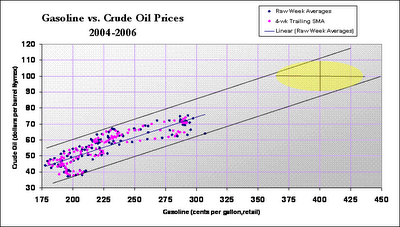Week number 4Sunday, July 30th, 2006 Day 19-At least 54 people - including some 30 children - are killed in Israeli air strikes on the southern Lebanese town of Qana
-Katyusha rockets fired by Hezbollah land near Kiryat Shemona, Nahariya and Maarot. No injuries reported
-Israeli artillery continues to shell the area around Bint Jbeil after pulling back ground forces on Saturday
-Five people killed in Israeli air strike on the village of Yaroun
-156 Rockets fall in Northern Israel, wounding 8
-NYT cumulative dead: Lebanon- 550+, Israel 52+
Monday, July 31st, 2006 Day 20-Israeli ground forces exchange fire with Hezbollah fighters near Kfar Kila
-Israel says it will suspend air strikes for 48 hours following the attack on Qana
-Israeli aircraft carry out strikes on roads near the village of Yanta near the border with Syria
-There is a brief lull in fighting following an Israeli attack on Qana, which killed at least 54 people, but Israeli Prime Minister Ehud Olmert rules out an immediate ceasefire
August 2006
Tuesday, August 1st, 2006 Day 21-Israeli officials say war planes have launched several attacks across Lebanon, targeting Hezbollah rocket launchers and hideouts, as well as a road to Syria in the Bekaa Valley, which the army says was hit to prevent weapons smuggling
-According to the Israeli army, 20 Hezbollah militants are killed in fighting around the Lebanese villages of Taibe, Adayseh and Rob Thalantheen
-There are fierce clashes between Israeli forces and Hezbollah fighters around
Ait al-Shaab,Israeli forces stage a fresh incursion at Houla, according to the UN Interim Force in Lebanon (Unifil)
-CNN reporting 3 soldiers killed in Ait al-Shaab, 22 wounded
-CNN reporting 560 cumulative Lebanese civilian dead
Wednesday, August 2nd, 2006 Day 22-Hezbollah fires more than 220 rockets at towns in Israel, mainly in the north and including Nahariya, where one person is killed, Karmiel, Kiryat Shemona, Maalot and Safed
-After air strikes and the landing of Israeli commandos by helicopter, there is heavy overnight fighting in
Baalbeck-A Hezbollah rocket lands near the town of Beit Shean, the deepest point yet hit inside Israeli territory, and another in the West Bank, near the village of Faqua
-Israeli planes attack a Lebanese army base south-east of Sidon, killing three Lebanese soldiers
CNN reports that fighting has been going on for 3 days at
Ait al-ShaabThursday, August 3rd, 2006 Day 23Israel drops leaflets to warn residents of Beirut of a new military operation against Hezbollah.
Hezbollah's leader, Sheikh Hassan Nasrallah, in turn warns that the group will bomb Tel Aviv if Beirut is attacked again.
According to Israeli officials, Defence Minister Amir Peretz tells top army officers to begin preparing for a push to the Litani river, which is up to 30km (19 miles) north of the border.
Fighting rages on the ground in south Lebanon with four more Israeli soldiers killed. Hezbollah again targets northern Israel, killing at least eight civilians.
Diplomats at the United Nations say delegates from the UK, France and the US are close to agreeing on a UN resolution calling for an immediate ceasefire.
The UN's refugee agency (UNHCR) warns that fuel shortages are increasingly hampering humanitarian relief operations in Lebanon.
Friday, August 4th, 2006 Day 24-Israeli air strikes damage bridges along a highway providing a key aid route into Lebanon, from
Arida on the Syrian border
-More than 20 people - thought to be farm workers - are killed in an Israeli air strike near the village of
Qaa, in north eastern Lebanon near the border with Syria
-Two Israeli civilians die in the village of
Mughar and in
Kiryat Shmona as Hezbollah rocket attacks continue - at one point more than 40 are fired in half an hour
-At least five people are killed in Israeli air raids on bridges over the main road heading north of the Lebanese capital to Syria, with other air strikes on the town of
Jounieh north of Beirut and the suburb of
Ouzai in the south of the capital
-Two Israeli soldiers are killed amid continuing clashes in southern Lebanon, including around or near
Markaba, Ait al-Shaab and
Naquora-Israeli warships shell the southern Beirut suburbs of
Haret Hreik and
Roweiss
Saturday, August 5th, 2006 Day 25-Israeli commandos clash with Hezbollah fighters in a raid on an apartment the city of
Tyre from where Israel said long-range missile had been launched hours earlier. Eight Israeli soldiers are hurt and several militants killed
-Hezbollah says it fired more missile at
Haifa in retaliation for the Tyre raid, wounding at least five people
-An Israeli soldier is killed after coming under Hezbollah mortar fire in the eastern village of
TaibeFrench-US draft resolution to be discussed by Security Council at 3pm. Agreement by France and US in morning. Israel so far "praises" resolution.
Resolution to be voted on Monday or Tuesday. Mandate of any International Force to be set out in 2nd Resolution. At 3pm, CNN reporting Lebanese cabinet has problems with resolution.
Saturday, August 5th, 2006 Day 26Hezbollah and Lebanese already rejecting Cease-Fire resolution.
Link to complete Chronology of Conflict
These reports are compiled from bullet points released by the New York Times and the BBC everyday and items mentioned in New York Times articles and in CNN reports.





